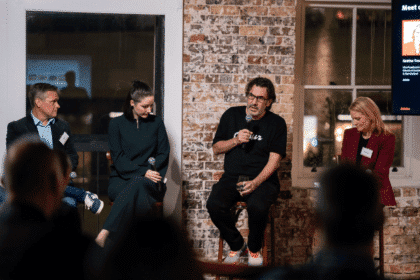In this latest from DDB’s Leif Stromnes, managing director of strategy and growth, he takes a look at why brands need to remember that people are willing to overlook a lot to get a happy ending. And, conversely, forget all the good stuff if the ending is bad.
“I’ve got some good news and some bad news. Which would you like to hear first?”
We’ve all been in situations when we’re presented with this uncomfortable double-headed monster, and if you’re like most people, you will choose to lead with the hammer blow of bad news and end with the sugar hit of goodness.
In fact, four out of five prefer to begin with a loss or negative outcome and end with a gain or positive resolve. Given a choice, us humans prefer endings that elevate, and sequences of events that lift us up rather than bring us down.

To illustrate this point, three Yale researchers set up an experiment using different versions of a short biography of a fictitious character they called Jim. In both versions, Jim was the CEO of a company, but the researchers varied the trajectories of Jim’s life. In one case he was a nasty guy who underpaid his employees, denied them healthcare benefits, and never gave to charities. But late in his career, close to retirement he became more generous. He raised his employee’s pay, shared profits and started donating large amounts of money to various charities around the community – only to die suddenly of a surprise heart attack six months after he turned benevolent.
In the alternative scenario, Jim moved in the opposite direction. For several decades, he was a kind and generous CEO – putting the wellbeing of his employees ahead of his own financial interests and donating large sums to local charities. But as he neared retirement, he dramatically altered his behaviour. He cut salaries, began taking most of the profits for himself, and ceased his charitable giving – only to die suddenly of a surprise heart attack six months later.
The researchers gave half their participants the bad-guy to good-guy bio, and half the good-guy to bad-guy bio and asked both groups to evaluate Jim’s overall moral character. Across multiple versions of the study, people assessed Jim’s morality based largely on how he behaved at the end of his life. They judged a life with 29 years of treachery and six months of goodness more positively than a life with 29 years of goodness and six months of treachery. It seems people are willing to override a relatively long period of one kind of behaviour with a relatively short period of another just because it ended on an upswing.
This bias for pleasant or emotionally satisfying endings holds in all aspects of life. The hit HBO TV series Game of Thrones ran for eight seasons and 73 roughly one-hour episodes, and if you go by IMDb reviews the first seven seasons were generally regarded as the greatest television series ever made.
But season eight was a travesty and the final episode ended so poorly that the series was ruined for a great many previously avid fans.
As reviewer theamazingandy writes below on IMDb, he was hooked for seven years, and then just one season, and one episode in particular, tainted his impression of the entire series.
This is akin to the Yale experiment quoted earlier but, in this instance, seven years of gripping, mind-blowing television is undone by 60 minutes of drivel. And as a result, the rating went from a probable 10 out of 10 to a one out of 10.
Brands would be well advised to take heed of our bias for elevated endings, especially as it clouds our evaluation of the entire experience. We don’t create a mental ledger of good and bad when evaluating brands, and as we have seen, the duration of goodness is largely neglected. The good news is ending on an upswing has the ability to raise all ships, but unfortunately, bad or unsatisfactory endings can wipe away accumulated goodwill in an instant.
As this review from Foiser on IMDb evinces, Game of Thrones learnt this lesson the hard way.










